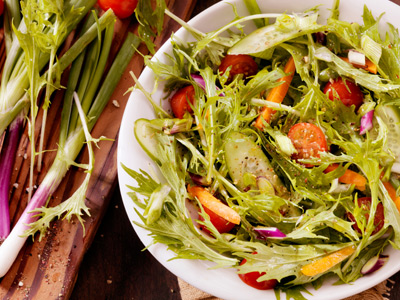
Teeth break up food into smaller pieces.
Digestion 01
A fascinating way to revise about what happens when you chew food. What is the purpose of glucose?
Aged between 11 and 14? This quiz is especially for you.
Scroll down to play the quiz
1 .
Protease breaks down .......
fat
fibre
protein
starch
The names of enzymes usually ends in -ase
2 .
Which of the following is NOT a type of tooth?
Canine
Feline
Incisor
Molar
Teeth break up food into smaller pieces
3 .
Saliva is mixed with the food. It contains .......
acid
amylase
lipase
protease
Amylase starts the digestion of starch
4 .
Which of the following organs is not part of the digestive system?
Heart
Liver
Pancreas
Stomach
The heart is part of the circulatory system
5 .
Starch is broken down into .......
amino acids
fatty acids
glucose
glycerol
Glucose is a small molecule which is used by cells to release energy
6 .
Lipase breaks down .......
fat
fibre
protein
starch
They are broken down into fatty acids and glycerol
7 .
At which range of temperatures do enzymes work best?
20-30°C
30-40°C
40-50°C
60-70°C
Normal body temperature is 37°C
8 .
Which of the following organs is not part of the digestive system?
Gut
Large intestine
Lungs
Small intestine
The lungs are part of the respiratory system
9 .
Which of the following is NOT an enzyme?
Bile
Carbohydrase
Lipase
Protease
Enzymes break down large molecules
10 .
Protein is broken down into .......
amino acids
fatty acids
glucose
glycerol
These are required to make new cells for your body
**Unlimited Quizzes Await You! 🚀**
Hey there, quiz champ! 🌟 You've already tackled today's free questions.
Ready for more?
Ready for more?
🔓 Unlock UNLIMITED Quizzes and challenge yourself every day. But that's
not all...
not all...
🔥 As a Subscriber you can join our thrilling "Daily Streak" against other
quizzers. Try to win a coveted spot on our Hall of Fame Page.
quizzers. Try to win a coveted spot on our Hall of Fame Page.
Don't miss out! Join us now and keep the fun rolling. 🎉
**Unlimited Quizzes Await You! 🚀**
Hey there, quiz champ! 🌟 You've already tackled today's free questions. Ready for more?
🔓 Unlock UNLIMITED Quizzes and challenge yourself every day. But that's not all...
🔥 As a Subscriber you can join our thrilling "Daily Streak" against other quizzers. Try to win a coveted spot on our Hall of Fame Page.
Don't miss out! Join us now and keep the fun rolling. 🎉







